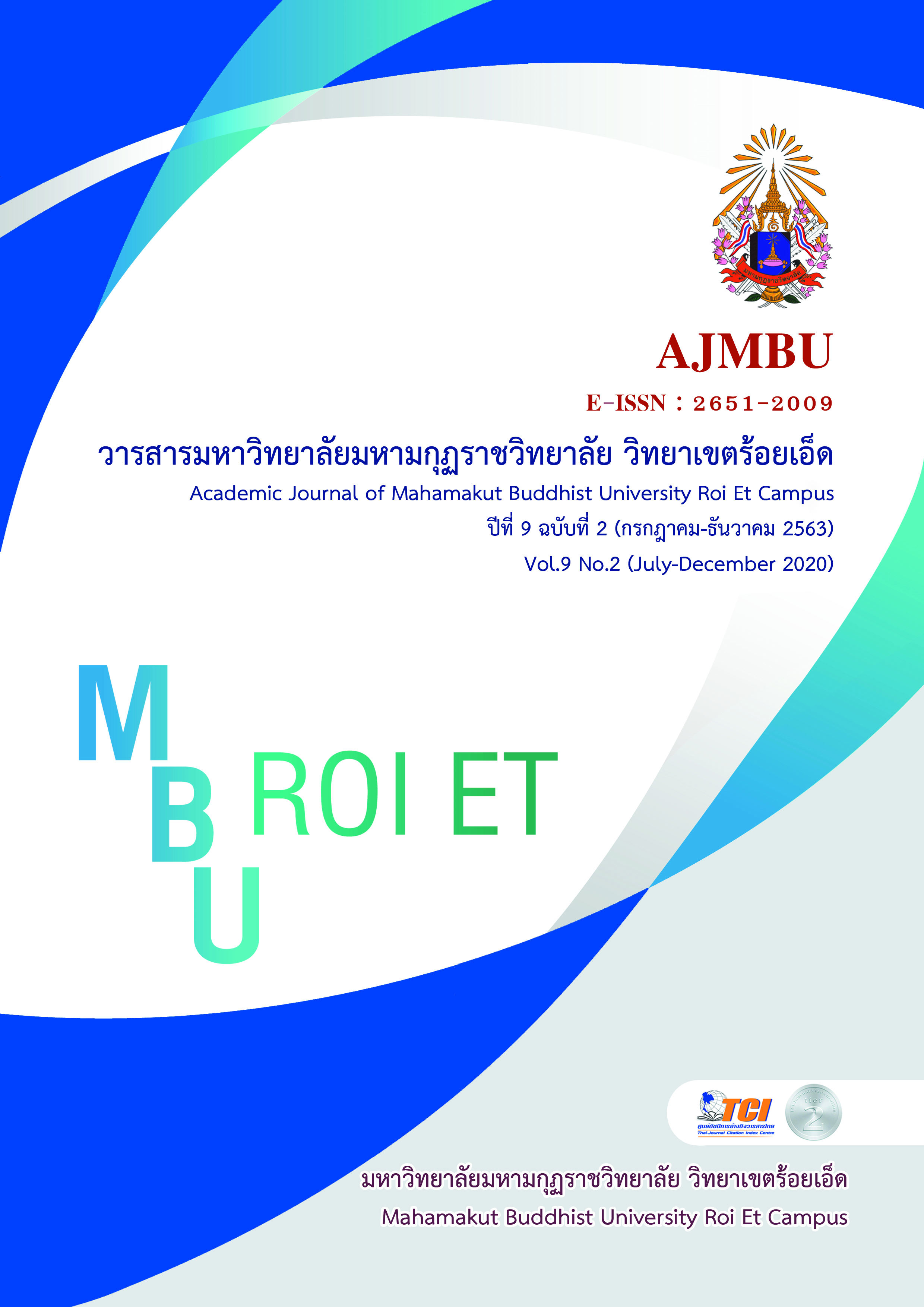Identity and Belief in Traditional Mural Painting for Developing Creative Products
Main Article Content
Abstract
The objectives of the research were to 1)study the identity and beliefs about folk mural painting. 2) Develop creative products based on beliefs in folk mural painting, the researcher used qualitative research methods. By choosing the area to do research is Wat Yang Temple, Thawararam District, Borabue District and Pa Le Lai Temple, Na Dun District, Maha Sarakham Province With murals that stand out in the story of the Isaan culture and traditions
The results showed that the study of identity and beliefs about folk mural painting With the aesthetic value that was created with the fineness of the technician in the village In terms of values, stories, drawings, tell stories, history and important events that occurred during the creation of the meaning and purpose that is hidden within the painting. The importance of the murals of Wat Yang Thuangwararam found that 1)important in the cause of creation 2)the importance of faith 3)the importance of recording the story in the past and 4)the importance of Seduce the mind In addition, the story of the identity of the two Sims is believed to be a belief about Choo's beliefs that have changed from the original.
For this reason, the researcher used it as a creative product through the physical structure and thought structure. By bringing the outstanding identity of Chuchakto be a guideline for developing products that emphasize modernity, beauty, creating added value for the product in a value and conforming to the needs of the market. Create a driving force for instilling the consciousness of people in the area to see the value of Isan culture For the continuation of the Northeast culture As well as being a prototype research in product design and development.
Article Details
References
บุญเกียรติ ไทรชมภู. (2557). การพัฒนาผลิตภัณฑ์ภูมิปัญญาท้องถิ่นพื้นที่คุ้งบางกะเจ้า (กระเพาะหมู)6 ตำบลเพื่อการท่องเที่ยวและรองรับการเข้าสู่ประชาคมอาเซียน. วารสารวิชาการมหาวิทยาลัยราชภัฏพระนคร. 5(2). 1-10.
ปานฉัตท์ อินทร์คง. (2557). การพัฒนาผลิตภัณฑ์ที่ระลึกชนเผ่าภาคเหนือ เพื่อส่งเสริมการท่องเที่ยวเชิงเศรษฐกิจสร้างสรรค์ : กรณีศึกษาชนเผ่าเย้า. วารสารศิลปกรรมศาสตร์วิชาการ วิจัยและงานสร้างสรรค์. 1(2). 21-41.
ยุทธนา ไพกะเพศ. (2555).จิตรกรรมอีสาน (ยุคก่อนประวัติศาสตร์ถึงยุคร่วมสมัย). ขอนแก่น : โรงพิมพ์ ศิริภัณฑ์.
ราม วัชรประดิษฐ์. (2560). ชูชก-ยอดเครื่องรางแห่งการขอ. ข่าวสด. 14 มกราคม 2560. สืบค้นเมื่อ 20 มีนาคม 2561. จาก www.khaosod.co.th/view_newsonline.php?newsid= 14379289 62
สมเด็จพระมหาวีรวงศ์(ติสสมหาเถระ). (2515). พจนานุกรมภาคอีสาน-ภาคกลาง. กรุงเทพมหานคร : ไทยวัฒนาพานิช.
ศักดิ์ชัย สายสิงห์. (2555). เจดีย์ พระพุทธรูป ฮูปแต้ม สิม ศิลปะลาวและอีสาน. พิมพ์ครั้งที่ 1. กรุงเทพมหานคร : มิวเซียมเพรส.
สุมาลี เอกชนนิยม. (2548). ฮูปแต้มในสิมอีสาน งานศิลป์สองฝั่งโขง. กรุงเทพมหานคร : สำนักพิมพ์มติชน.
สุริชัย หวันแก้ว. (2552). ศิลปวัฒนธรรมร่วมสมัยบนความหลากหลายและสับสน. กรุงเทพมหานคร : สถาบันเอเชียศึกษา จุฬาลงกรณ์มหาวิทยาลัย.
พระมหาหรรษา ธมฺมหาโส และกรรณิการ์ ตั้งตุลานนท์. (2556). คุณค่าและความสำคัญของจิตรกรรมฝาผนังอุโบสถกลางน้ำ มหาวิทยาลัยมหาจุฬาลงกรณราชวิทยาลัย. กรุงเทพมหานคร : รพีปกรณ.


